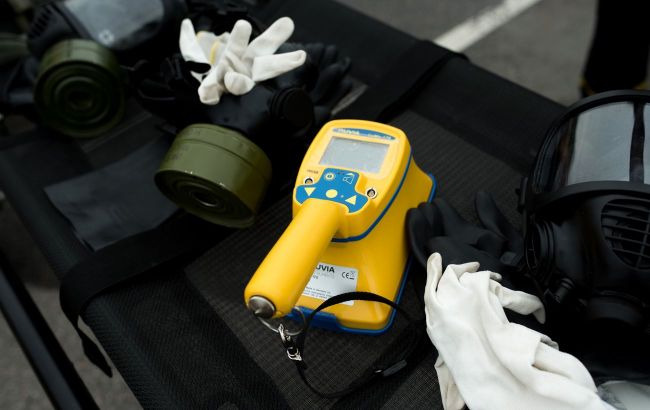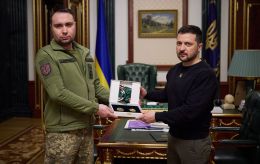Mariupol radiation levels surge 15 times over limit amid Russian incursion
 Photo: radiation indicators in Mariupol increased 15 times (GettyImage)
Photo: radiation indicators in Mariupol increased 15 times (GettyImage)
In Mariupol, the level of radiation norm was exceeded 15 times. The occupiers are trying to calm the population, but in fact, this is how they are covering up their next war crime, the adviser to the mayor of the city, Petro Andriushchenko, reports.
"In Mariupol, a 15.5 times increased radiation background was recorded on the Pischany beach in the port area. The level was 4.04 μSv/h at a human safety level of 0.26 μSv/h. That is, 15 times higher than the safety level," says Andryishchenko.
Local propagandists interpreted such an increase in indicators as safe for the population and explained it as a recent storm.
However, as AndryIshchenko emphasizes, both justifications are false.
"Indeed, in the area of "Pishchanyi" beach there are so-called "black sands" that "sound". Indeed, the point level of radiation of these sands during normal life could harm only if you systematically spend a lot of time here," explains the adviser to the mayor of Mariupol.
However, the real reason for the exposure of the "black sands" is not the storm, but the constant bombing and shelling of the city against the background of the Russian occupation.
"However, not only "Pishchanyi". If someone measured the level of radiation in Azovstal at the moment, as well as analyzed the composition of the soil and dust, which are blown by the wind across the city and rain into the sea, then the picture would become truly apocalyptically vivid," emphasizes Andriushchenko.
He notes that this is why the Russians are not currently taking measurements there in order to hide the ecocide they have committed.
Russian ecocide in southern Ukraine
Note that the Russians, waging war against Ukraine, are committing mass ecocide on its territory.
The biggest environmental tragedy perpetrated by the Russians was the blowing up of the Kakhovska HPP. On the night of June 6, the Russian occupiers blew it up, which caused the flooding of a number of settlements in the Kherson region. The temporarily occupied left bank suffered the most.
In turn, the terrorist attack could have provoked more tragic consequences, since the uncontrolled lowering of the water level created additional threats to the ZNPP, causing significant problems in powering the turbines and safety systems.
The UN has called another Russian terrorist act a large-scale environmental catastrophe that goes beyond the borders of Ukraine.
In addition, the day before it became known that the Russian occupation forces were stealing animals from the Kherson reserve "Askania-Nova" and transporting them to the Krasnodar "Safari Park". The National Resistance Center of Ukraine emphasized that these actions are formal theft and destruction of the reserve's unique fauna.
Earlier we also reported what the Russians did with the island of Dzharylhach. It is known that a fire lasted for about a week on a temporarily occupied island in the Kherson region. The fire destroyed the most valuable area of the entire territory - the reserve, where unique species of flora and fauna were located. Later it became known that this entire zone was completely destroyed, which is almost 16 kilometers.

